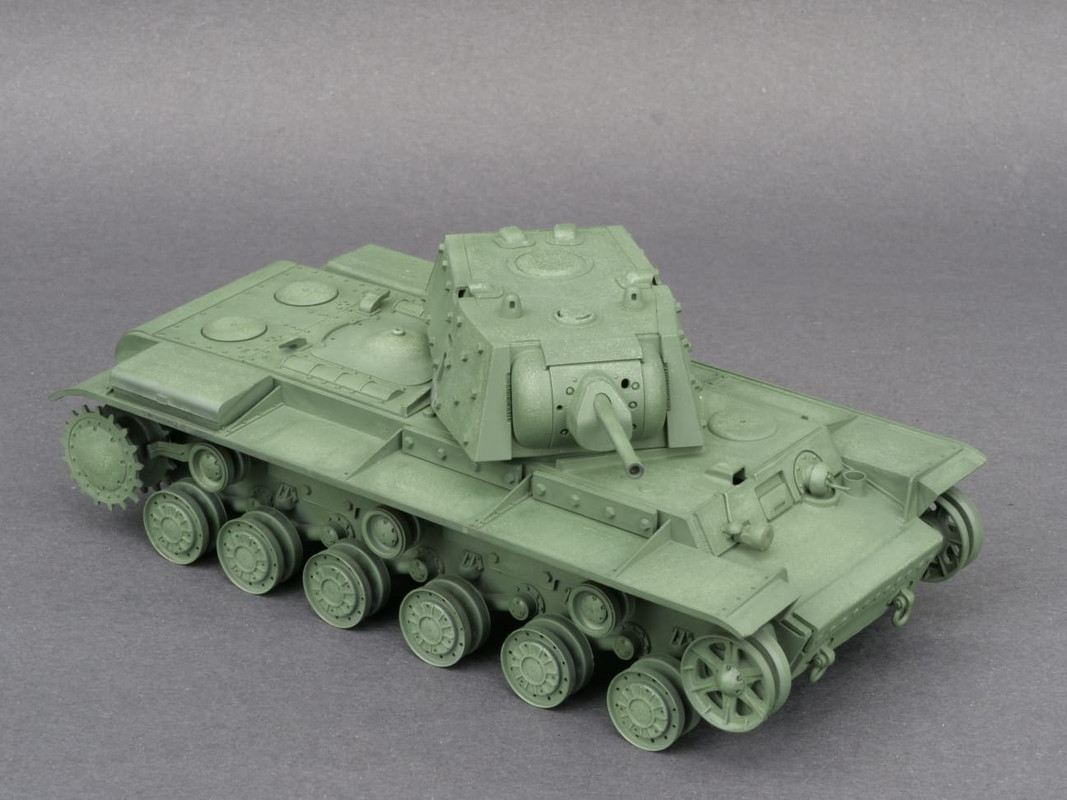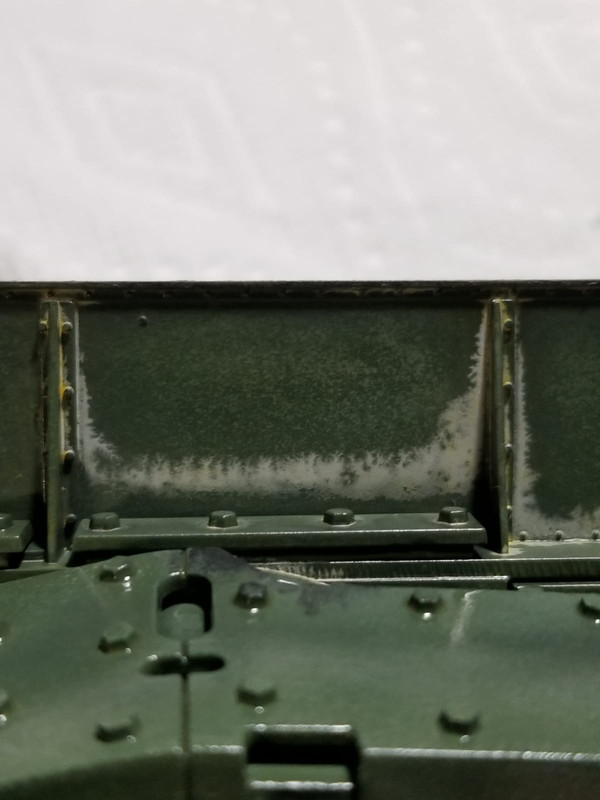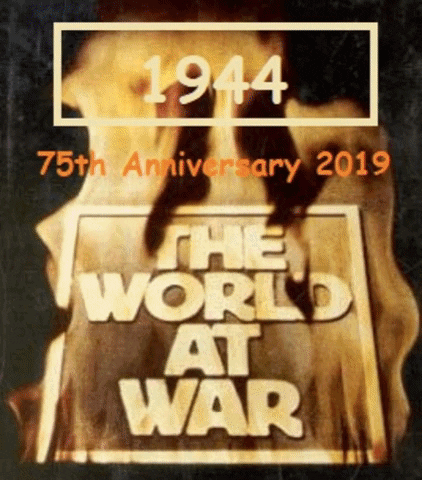Well, to be truthfully honest, I have not visited this forum for about 8 months. I haven't done any modeling at all during that time. I got my highschool diploma, went through surgery, rennovated a new place, moved, and started college. Now I got my first workbench setup in the garage and I was very excited to get back into modeling.
I decided that an old Tamiya KV-1 would be a good way to warm up. Nothing crazy, no stowage, no scratch building today...
Assembly went alright and I even made some armor texture with Surfacer 500. I preshaded, and did some "distressing" that I saw in a youtube video. I airbrushed Tamiya paints thinned in Tamiya's lacquer thinner which went nicely. I used some hairspray between 2 green layers for the effect and the model looked pretty good.

I then wanted to seal what I've done so far with a varnish. I used the Tamiya spray can for gloss varnish and did several light coats. I ended up using the entire can and the model still was not fully glossy and the surface seemed rough. This already seemed strange to me and I knew I made a mistake somewhere down the line but I was not sure where. I shared the photo to a couple of friends and one suspected that I thinned down the paint way too much and it dried mid-air leaving a rough "orange-peel" effect. He suggested I use Mr. Color Leveling thinner because it has retarder in it. On top of that he claimed that Tamiya gloss coat is "garbage" and the Mr.Color gloss varnish is much superior. Instead of buying new thinner I will experiment adding Liquitex flow-aid (retarder) into my thinner when I paint. Leveling thinner is expensive and hard to get here in Florida while my local shop has Tamiya thinner. I was a little frustrated with how the gloss went and I began wondering how people even get to automobile gloss. What are the best products for getting gloss coats?

I then wanted to unify the greens a little and wanted to tint the model yellowish to get closer to the "4BO" Soviet color. I mixed some yellow ochre oil paint into Tamiya enamel thinner to make a "filter". I then brush painted it on the model and suddenly the paint in specific areas seemed to melt to gray. I was bewildrerd because I have never used gray on those areas of the model and the plastic is green to start with! I preshaded black and white but not gray. The filter seemed to work alright but that grey stuff was just growing out of a couple areas of the tank and I really wonder how that happened. I always thought that enamel thinner did not activate acrylics. I even applied a varnish and it still ate through it to a color of unknown origin.

I deciced to leave the model alone and tomorrow I will apply a coat of future and try to proceed and hide my mistakes. I am just confused on where I really went wrong and how I can prevent this from happening again. I plan on painting and experimenting on plastic spoons from now on and not on my models. I can't have this happen on a build I really care about!
If you read through all of this, thank you. Despite this initial let-down, it feels really good to get back into the hobby and in the forum.
"The farther back you look, the farther forward you are likely to see." - Winston Churchill
IN PRODUCTION:
Trumpeter KV-2 1940 1/72
Tamiya Flakpanzer IV Wirbelwind 1/48
